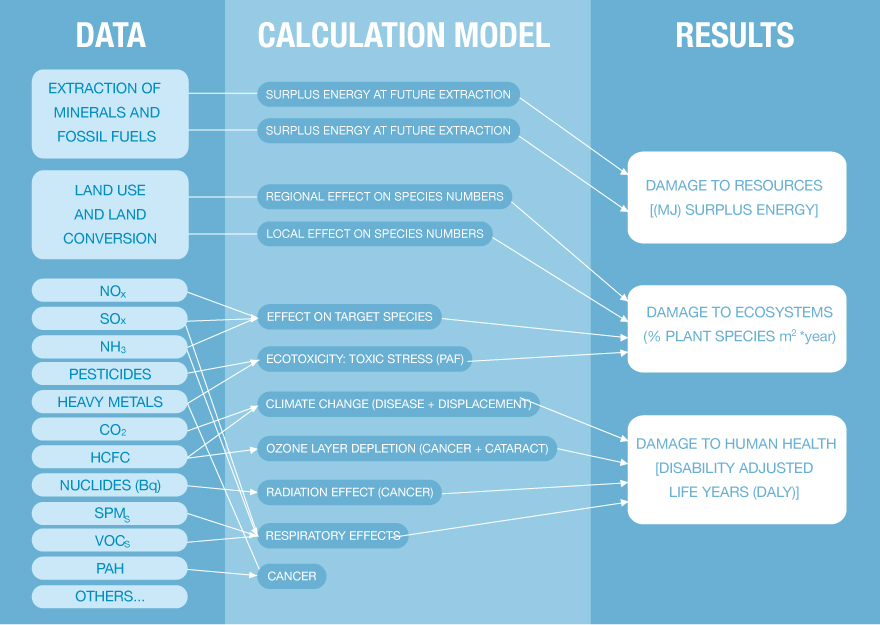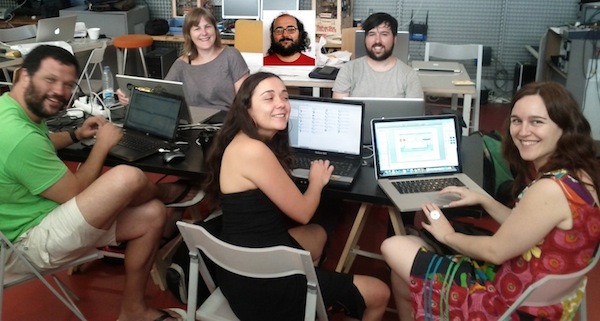Relative impacts
Environmental impacts are complex issues. Here you can see how the different transport influences the environment in different ways. Write some of your travels (origin destination and frequency) and then choose a transport to start exploringTRAVEL IS FREEDOM AND IMPLICATIONS
Traffic jams of today, as unpredictable as natural disasters and romantic love, break continually the record for slowness. The associated stress alters the rhythm of your heartbeat. Will a flight to a paradise destination give you emotional peace?
But what are the implications of this travel? How does it change the quality of the air you breathe or the metals in your blood? How many species might disappear, maybe taking with them medicines against cancer? How does it impact the scarcity of minerals and changes the use of land?
"Where Do We Go? The freedom of travel" investigates the aspects related to the environmental impact of using different transport means. It will allow you to understand the consequences of your yearly transport habits; will permit you to make a personal estimation of the relative importance of these aspects. Your resulting traveller identity will enable you to understand the implications of your priorities in terms of environmental impact caused by your travel habits.
Global travel identity
This graphic shows how the different travels you added to the list contributed to the three different impact categories.How important is health for you? and the ecosystem quality? how important do you think it can be the resource depletion? Science can give us information about environmental impacts, but it is necessary to open up a social dialogue to establish our priorities about the different protection areas.
Give them a value to create your traveller identity.
close
Add the travels you make in a year to make comparisons and to get your impact identity
Carcinogens
any substance, radionuclide, or radiation that are an agent directly involved in causing cancer, for example: dioxins, benzene, kepone, EDB, asbestos
Respiratory organics:
Organic compounds are those containing carbon into their molecules. Some of them like the Volatile Organic Compounds (VOC) caused asthma and building related illness.
Respiratory inorganics:
Inorganic compounds are considered to be of a mineral, not biological origin. Some of them when inhaled caused metal fume fever and other respiratory diseases.
Climate change:
Is a long-term change in the statistical distribution of weather patterns; in this case the effects are related to the global warming that is the current rise in the average temperature of Earth's oceans and atmosphere. This causes changes in geographic ranges and incidence of vector-borne diseases, and in the incidence of diarrhoea and other infectious diseases, asthma and allergic disorders, psychological diseases, malnutrition, hunger
Ionising Radiation
particles or electromagnetic waves that are energetic enough to detach electrons from atoms or molecules, therefore ionizing them. Radiation can cause changes in DNA that can be the origin of cancer and create hereditary effects, like mutations in foetuses.
Ozone layer depletion:
Is the decline of about 4% per decade in the total volume of ozone in Earth's stratosphere (the ozone layer), this reduction increases the UV radiation that arrives to Earth surface. UV radiation causes some adverse effects on human health like sunburn, skin cancer and ocular damage like cataracts.
Ecotoxicity
Is the branch of toxicology concerned about the study of toxic effects caused by pollutants to the ecosystems. The toxic stress to the ecosystem caused to animal, vegetable and microbial, death, reduction of growth, changes in number of species, reproductive impairment
Acidification/Eutrophication:
Are caused by depositions of inorganic substances into soil and water. The primary effect is the change in nutrient level (eutrophication) and acidity (acidification) in the soil. Eutrophication produces a great increased of algae in the surface that reduced the oxygen in the water that induces death to fishes and other plants. Acidification of the soil reduces the possibility of the vegetation of growing on it.
Land use:
The impact of land-cover changes on ecosystems is very significant, it can reduced the number of species that lived on it, the evapotranspiration that helps the earth surface not to overheat. Some of the actions into the land, like mining, cannot be easily restored.
Minerals
minerals are non-renewable resources. As they are used as raw materials in many processes, their depletion would generate such a huge scarcity problem for the technosphere.
Fossil Fuel
Humanity energetic dependence is one of the hottest spots for this century. Fossil fuels depletion is studied for oil, natural gas and coil.
Human Health
Human health means the absence of premature death, sickness or irritations caused by emissions to air, water and soil.
Ecosystem
A high ecosystem quality is the condition in which the flows of energy, matter and information in the ecosystem are not noticeably disrupted by anthropogenic activities
Resources
The quality of the non-renewable resources is important because if it decreases on one side it will cost much more money and energy to extract the same amount of material and on the other the extraction will create bigger environmental burdens.
Comparation with average european
This is the impact of your travels compared with those of the average European for each category. For instance
- -50% means that, taking into account only the current travel on the screen, your impact is -50% under what an european do in a year
- +30% means that,the current travel is already above the european average
Comparation with average european
This is the part that represents the transport into your global impact.
- For instance: 2% in resource impact: means that, with the current travel on the screen, is the 2% of all your impact in a year.




